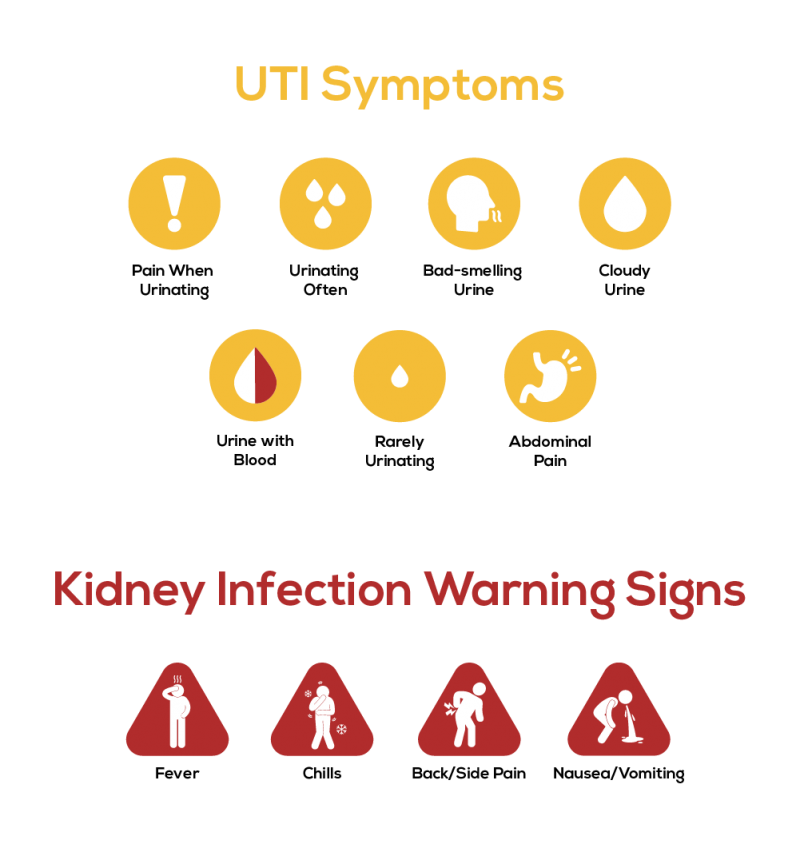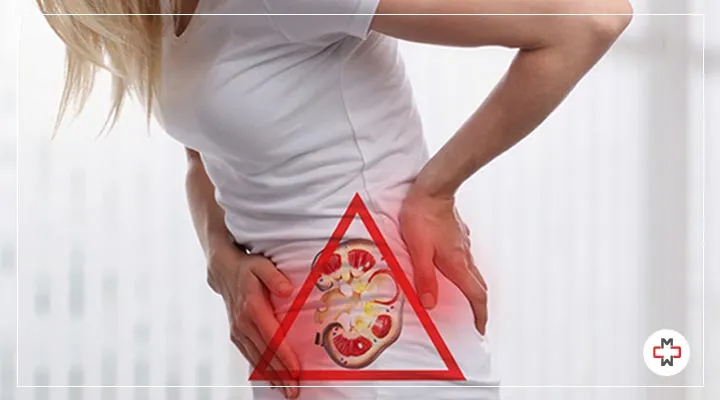An Extensive Analysis of Therapy Choices for Kidney Stones Versus Urinary Tract Infections: What You Required to Know
The distinction between therapy alternatives for kidney stones and urinary system tract infections (UTIs) is crucial for effective individual administration. While UTIs are commonly resolved with anti-biotics that offer quick alleviation, the method to kidney stones can differ substantially based upon private elements such as stone size and make-up. Non-invasive approaches like extracorporeal shock wave lithotripsy (ESWL) may be appropriate for smaller stones, yet larger or obstructive stones frequently require more intrusive methods. Recognizing these nuances not just informs scientific decisions however also improves individual results, inviting a better evaluation of each condition's therapy landscape.
Recognizing Kidney stones
Kidney stones are tough deposits developed in the kidneys from minerals and salts, and understanding their structure and development is important for effective management. The primary types of kidney stones consist of calcium oxalate, calcium phosphate, struvite, uric acid, and cystine stones, each with unique biochemical beginnings.
The formation of kidney stones occurs when the focus of specific materials in the urine enhances, bring about crystallization. This condensation can be influenced by urinary pH, quantity, and the presence of preventions or marketers of stone formation. Low pee volume and high level of acidity are favorable to uric acid stone advancement.
Comprehending these factors is necessary for both avoidance and treatment (Kidney Stones vs UTI). Effective administration approaches may consist of dietary modifications, increased fluid intake, and, sometimes, medicinal interventions. By identifying the underlying causes and kinds of kidney stones, doctor can carry out customized approaches to minimize recurrence and enhance client end results
Introduction of Urinary System Tract Infections
Urinary system infections (UTIs) are common microbial infections that can impact any type of part of the urinary system, including the kidneys, ureters, bladder, and urethra. The majority of UTIs are brought on by Escherichia coli (E. coli), a kind of germs typically located in the intestinal tracts. Women are extra vulnerable to UTIs than males due to physiological distinctions, with a shorter urethra helping with easier bacterial access to the bladder.
Symptoms of UTIs can differ depending on the infection's area however frequently include constant peeing, a burning sensation during peeing, strong-smelling or cloudy urine, and pelvic discomfort. In more extreme situations, especially when the kidneys are entailed, signs and symptoms may also consist of high temperature, cools, and flank discomfort.
Risk aspects for creating UTIs include sexual activity, specific kinds of birth control, urinary system tract irregularities, and a damaged immune system. Motivate therapy is important to stop difficulties, consisting of kidney damage, and generally includes anti-biotics customized to the details bacteria involved.
Treatment Options for Kidney stones

If the stones are larger or cause significant discomfort, non-invasive treatments such as extracorporeal shock wave lithotripsy (ESWL) might be used. This strategy makes use of acoustic waves to damage the stones into smaller fragments that can be more easily gone through the urinary system.
In instances where stones are as well big for ESWL or if they obstruct the urinary system, ureteroscopy might be shown. This minimally invasive procedure involves making use of a small scope to break or remove up the stones straight.

Therapy Choices for UTIs
Exactly how can doctor successfully deal with urinary tract infections (UTIs)? The primary approach entails a thorough assessment of the person's signs and symptoms and clinical history, followed by suitable diagnostic screening, such as urinalysis and pee society. These tests help identify the original microorganisms and identify their antibiotic sensitivity, assisting targeted treatment.
First-line treatment typically includes anti-biotics, with choices such as nitrofurantoin or trimethoprim-sulfamethoxazole, depending upon local resistance patterns. For straightforward cases, a brief course of anti-biotics (3-7 days) is often enough. In recurring UTIs, companies may take into consideration alternative methods or prophylactic anti-biotics, including way of living modifications to minimize threat elements.
For people with challenging UTIs or those with underlying wellness problems, more hostile treatment may be essential, potentially entailing intravenous antibiotics and more diagnostic imaging to analyze for problems. In addition, client education and learning on hydration, hygiene methods, and symptom administration plays a crucial function in avoidance and reoccurrence.
Contrasting End Results and Effectiveness
Evaluating the end results and performance of therapy choices for urinary system system infections (UTIs) is crucial for optimizing person treatment. The key therapy for uncomplicated UTIs usually includes antibiotic treatment, with options such as nitrofurantoin, trimethoprim-sulfamethoxazole, and fosfomycin.
On the other hand, therapy end more information results for kidney stones vary considerably based on stone area, make-up, and size. Choices vary from traditional management, such as hydration and discomfort control, to interventional treatments like extracorporeal shock wave lithotripsy (ESWL) and ureteroscopy. While ESWL has a high success rate for smaller stones, issues can occur, demanding further treatments.
Eventually, the effectiveness of therapies for both conditions rests on precise diagnosis and customized techniques. While UTIs typically react well to prescription antibiotics, kidney stone administration may need a complex method. find out here Continual assessment of therapy outcomes is essential to boost patient experiences and reduce reoccurrence rates for both UTIs and kidney stones.
Final Thought
In summary, therapy techniques for kidney stones and urinary system infections differ substantially as a result of the distinct nature of each problem. UTIs are primarily addressed with prescription antibiotics, supplying punctual relief, while kidney stones require customized interventions based on size and composition. Non-invasive methods such as extracorporeal shock wave lithotripsy are ideal for smaller stones, whereas larger or obstructive stones may need ureteroscopy. Identifying these distinctions enhances the ability to give ideal client treatment in handling these urological problems.
While UTIs are typically resolved with antibiotics that offer fast relief, the method to kidney stones click for source can vary considerably based on individual factors such as stone size and make-up. Non-invasive approaches like extracorporeal shock wave lithotripsy (ESWL) may be ideal for smaller sized stones, yet larger or obstructive stones typically call for even more intrusive methods. The primary kinds of kidney stones consist of calcium oxalate, calcium phosphate, struvite, uric acid, and cystine stones, each with distinct biochemical origins.In comparison, therapy outcomes for kidney stones differ substantially based on stone composition, location, and dimension. Non-invasive approaches such as extracorporeal shock wave lithotripsy are appropriate for smaller stones, whereas larger or obstructive stones might call for ureteroscopy.